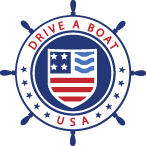California Boat Sewage Disposal: Pumpout Stations & No Discharge Zones
As boating continues to increase in popularity, human activities and waste are putting more and more pressure on the environment, particularly in crowded recreational waters. To mitigate the damage, the government has implemented laws regulating boat sewage discharge in American waters.
It’s very important for recreational boaters to follow the law in order to keep our waters clean and enjoyable. Find out about California’s boating laws regarding sewage disposal and how you can comply!
The environmental impact of boat sewage discharge
A single flush of raw sewage from your boat has the same impact as 10,000 flushes at home, because the latter is treated as a facility before being released into the environment. Untreated sewage can lead to harmful algae blooms (HABs) and depletes the oxygen in the water as it decomposes, both of which make it difficult for aquatic life to survive.
Human waste also contaminates the water with pathogens like bacteria, viruses and parasites, which can endanger the health of those enjoying the water or eating its seafood.
California boat sewage disposal laws
It is against both federal and state law to discharge untreated sewage within three miles of shore. This applies to lakes, rivers, reservoirs and coastal waters within the three-mile limit. Those who discharge raw sewage illegally can face up to $2,000 in fines.
It is also against the law to discharge sewage of any kind (treated or untreated) in marinas, yacht harbors, enclosed freshwater lakes, reservoirs, non-interstate rivers and waters designated as No Discharge Zones.
All boats with a head (toilet) installed are required to have a Coast Guard-approved marine sanitation device (MSD) in order to operate on American waters. These devices either hold the sewage for pumpout ashore or until they get beyond the three-mile limit, or treat it to Federal standards before dumping it somewhere treated sewage discharge is allowed.
Marine sanitation devices (MSDs)
There are three types of marine sanitation devices. Type I and II MSDs must have a certification label that proves they meet Coast Guard requirements and EPA regulations. Type III MSDs aren’t required to have a label if they are simply storage devices.
Boats no more than 65 ft in length are allowed to have any of the three types installed, whereas vessels over 65 ft are required to have a Type II or III device.
Type I
A Type I MSD is a flow-through system that relies on maceration and chlorination to treat the sewage. The resulting effluent must have no more than 1,000 fecal coliform bacteria per 100 ml and no visible floating solids.
Type II
A Type II MSD is a flow-through system that usually relies on aerobic digestion or a similar biological system to treat the sewage. The resulting effluent must have no more than 200 fecal coliform bacteria per 100 ml and no more than 150 mg of floating solids per L.
Type III
A Type III MSD is generally some kind of holding tank that stores waste until it can be discharged ashore or beyond three miles out to sea. It may include additional systems such as incineration, recirculation or composting.
No Discharge Zones in California
States can apply to the EPA to have specific waterways designated as No Discharge Zones if they meet certain conditions. Here are the No Discharge Zones in the state of California:
- Avalon Bay Harbor
- Channel Islands Harbor
- Dana Point Harbor
- Huntingdon Harbor
- Lake Tahoe
- Mission Bay
- Newport Bay (Upper and Lower)
- Oceanside Harbor
- Richardson Bay
- Sunset Bay
Boat sewage pumpout stations, floating restrooms and other options
There are plenty of pumpout stations where you can empty your sewage tank, dump stations for disposing the contents of portable toilets, and floating restrooms available for use. The California State Parks Division of Boating and Waterways provides lists of the sewage disposal services available to boaters and their locations.
Learn more about California boating laws!
There are plenty of laws in place to protect the environment and keep boaters safe on the water. The state of California is currently implementing a requirement for pleasure craft operators to take a boating safety course to learn more about these regulations. By 2025, recreational boaters of all ages will need the certification.
Drive a Boat USA offers a NASBLA-approved boating safety course for recreational boaters in California. Simply study the course materials online at your own pace and when you feel ready, take the exam to obtain your California Boater Card. Register today to begin your boating adventure!

